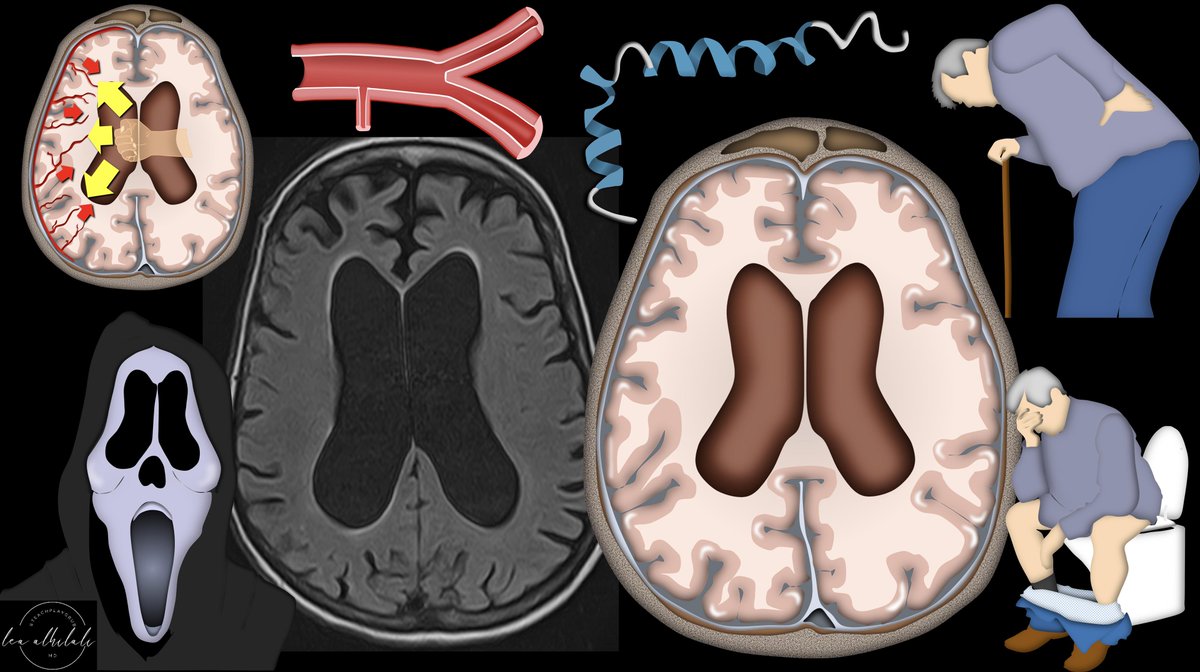1/Frontal sinus fractures are a headache! Knowing what's important about these fractures is important to any trauma CT report
Here’s a #tweetorial to help you remember & understand these critical fractures
#meded #medstudent #radres #neurorad #HNrad #FOAMed #FOAMrad #medtwitter
Here’s a #tweetorial to help you remember & understand these critical fractures
#meded #medstudent #radres #neurorad #HNrad #FOAMed #FOAMrad #medtwitter

2/Calvarium & sinuses act as important protectors of your intracranial contents, most importantly, your brain. They are like a built in helmet to protect you from linebackers of life 

3/The sinuses are actually even better than a helmet. They are like the crumple zone of a car, but for your brain. They can be crushed inwards, absorbing energy and keeping it from impacting your brain 

4/The crumple zone of the frontal sinus is like a sandwich. First, the top bread, is the anterior wall. The meat/filling is the sinus itself & sinus drainage pathway. Finally, the bottom bread is the posterior wall. Each of these can be affected by trauma. 

5/First is the anterior wall. Usually, a significant trauma is required to break the anterior wall of the frontal sinus, as it forms the frontal bar, supporting the facial buttresses. 

6/You can think of an anterior wall fx like a fender bender. The front of the car is damaged, but everything else is intact. Fixing a fender bender is all about cosmetics. Anterior wall fxs are fixed if they are depressed bc having a dent in your forehead is very noticeable. 

7/Next is a fx that affects the meat, or the sinus itself. Any medial fx that affects the ability of the sinus to drain into the ethmoids or significantly disrupts the muscosal elements will make the sinus unable to drain and susceptible to mucocele formation. 

8/Fxs that obstruct the drainage pathway or mucosal elements are like car accidents that wreck your engine. A car needs to drive & a sinus needs to drain. If they can’t, they are worthless. So a car goes to the junk yard & a sinus gets obliterated. Tx is sinus obliteration. 

9/Finally, posterior wall fxs. Posterior wall fxs are dangerous if they disrupt the dura & therefore cause a communication between the brain & the outside—bc this can cause infection. Signs that the dura have been violated are extra-axial blood or pneumocephalus. 

10/Posterior wall fxs are like an accident that breaks your windshield. Now all that air is free to flow into the car—like the air from the sinus, potentially containing bacteria, can flow into the intracranial compartment 

11/You will never get that seal back. The treatment is cranialization—kind of like turning the car into a convertible. 

12/Here is the algorithm for treating frontal sinus fxs.
Anterior wall only = fixation for cosmetic.
Fx affecting sinus drainage = junk the sinus/obliteration.
Fx of the posterior wall w/risk for infxn = take the top off/cranialization.
Anterior wall only = fixation for cosmetic.
Fx affecting sinus drainage = junk the sinus/obliteration.
Fx of the posterior wall w/risk for infxn = take the top off/cranialization.

13/Based on the treatment algorithm, radiology reports must reflect findings that change management.
Depression/comminution of ant wall fx=need for ORIF
Findings of violation of the dura=need for cranialization
Findings of nasofrontal duct obstruction=need for obliteration
Depression/comminution of ant wall fx=need for ORIF
Findings of violation of the dura=need for cranialization
Findings of nasofrontal duct obstruction=need for obliteration

14/So here is a summary of the frontal sinus fractures and their management. Hopefully, when it comes to frontal sinus fractures, this tweetorial will help you save face and stay a head of the game! 

• • •
Missing some Tweet in this thread? You can try to
force a refresh






















